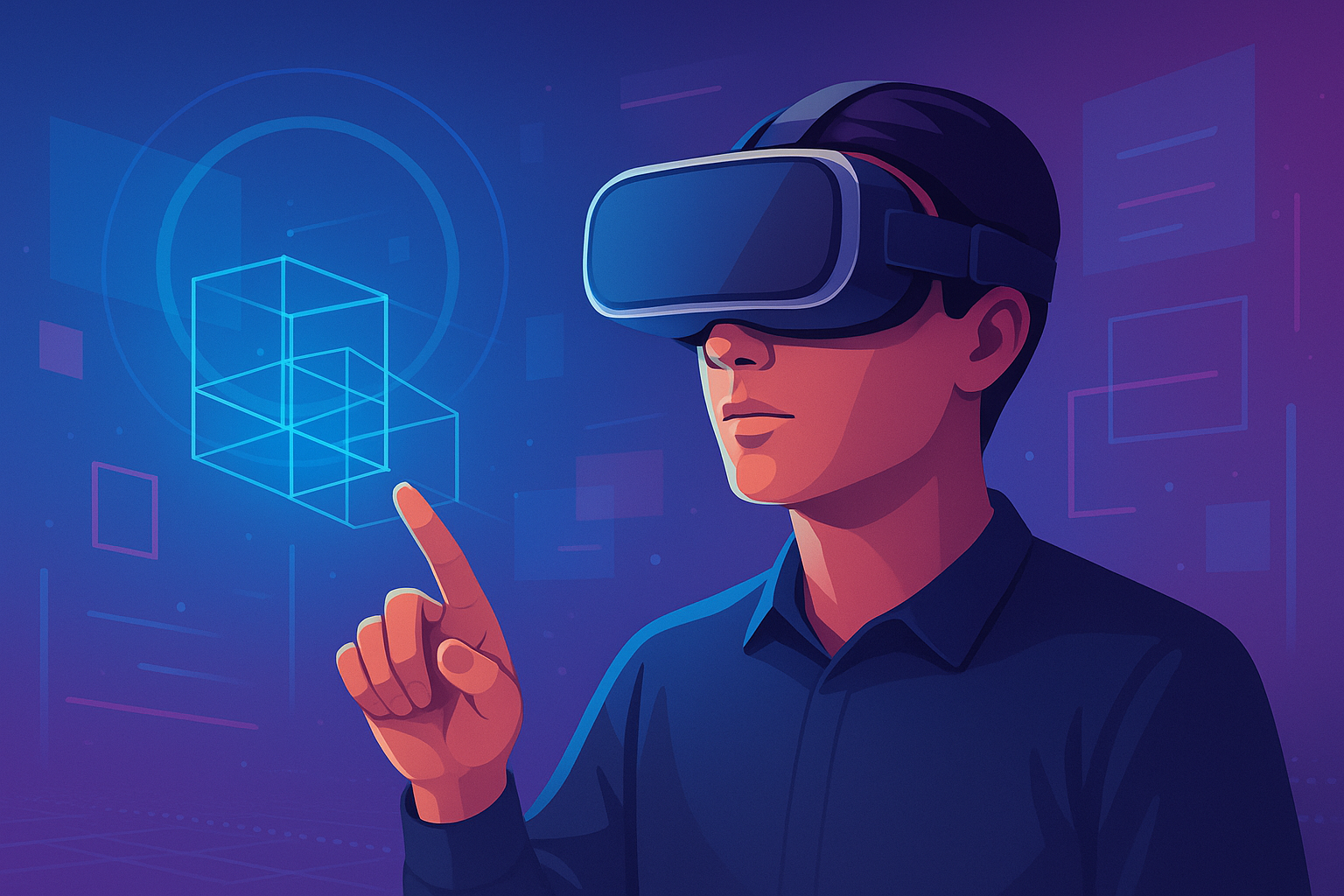Spatial Computing+World Bulid | 매거진에 참여하세요
Spatial Computing+World Bulid
#Spatial #Computing #AI #World #Buliding #Metaverse #3D #XR #Virtual
The Second Wave of the Metaverse : Has the Metaverse Really Died?
By 2022–2023, “metaverse” seemed like a fading buzzword. VRChat, Roblox, and Meta Horizon persisted, but public attention shifted to AI.
In 2025, a new narrative emerges: Spatial Computing and AI World-Building are reviving the idea of immersive virtual worlds,
but with far more automation and scalability.
What is Spatial Computing?
Spatial Computing goes beyond VR/AR. It integrates real-world space and digital objects for natural interaction:
Apple Vision Pro: Launch apps in 3D space, manipulate with hands
Meta Quest 4: Mixed-reality games and collaboration tools
Samsung XR Headset: MR device integrated with Google ecosystem
The key idea: apps live in your physical space, not just on a screen.
What is AI World-Building?
Traditional metaverse creation required months of modeling and coding. Now, AI can generate worlds instantly:
Unreal Engine + AI: Prompt-based world generation, automatic NPC creation
Roblox + AI Assistant: Auto-generation of items and maps
Unity Muse: Code and art resource generation
AI now designs environments, stories, characters, and interactions, democratizing virtual world creation.
Why This Matters
- Cost Reduction: Prototyping maps in minutes instead of months
- Democratized Creation: Anyone can generate worlds via prompts
- Real-Time Interaction: NPCs powered by GPT-4o-like models for natural conversations
- Industry Expansion: Beyond gaming—education, architecture, marketing, and collaboration
Examples
- Meta Horizon Worlds: AI builder boosts user-generated content
- Roblox AI Code Assist: Kids can create games with simple commands
- Apple Vision Pro: Designers convert 2D designs (Figma) into 3D apps using AI
- Architecture & Real Estate: AI simulates buildings and cityscapes before physical construction
Traditional Metaverse vs AI World-Building
Feature | Traditional Metaverse | AI World-Building |
|---|---|---|
Creation | Manual modeling & coding | Prompt-based automatic generation |
Production Time | Months | Minutes–hours |
Participants | Developers only | Anyone |
NPC Behavior | Pre-scripted | AI-driven dynamic behavior |
Application Scope | Gaming | Education, marketing, collaboration, architecture |

Industry Applications
Education: Students explore AI-generated historical cities
Marketing: Interactive AI worlds for campaigns
Real Estate / Architecture: Simulate buildings in VR before construction
Remote Collaboration: AI virtual offices for meetings
Future Directions
World Models: OpenAI, DeepMind researching comprehensive world simulation
Platform Standards: Unreal, Unity, Roblox, Apple competing for AI metaverse dominance
Economy Integration: AI world-building + NFTs for creator economy
Hybrid UX: Seamless transition between real and AI-generated spaces
Skills to Study
Language / Tool | Platform | Use Case |
|---|---|---|
C# | Unity | AR/VR/XR apps, interactive training simulations |
C++ | Unreal Engine | High-end graphics, large-scale AI world simulation |
Swift / Objective-C | Apple Vision Pro | visionOS apps, RealityKit 3D APIs |
JS / TS | WebXR / Three.js / Babylon.js | Web-based XR, browser 3D/VR experiences |
Python | AI + Prototyping | AI world-building, automation, 3D asset generation |
Quick Roadmap
Quick start: Unity + C#
High-end graphics: Unreal Engine + C++
Apple Vision Pro: Swift + RealityKit
Web / Cross-platform XR: WebXR + JS/TS
AI + XR Fusion: Python for AI + 3D engine integration






